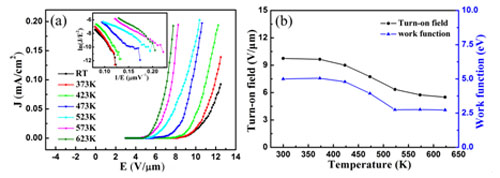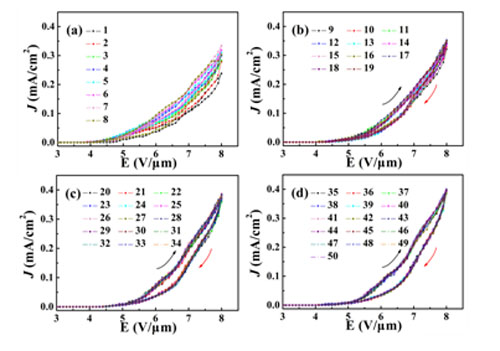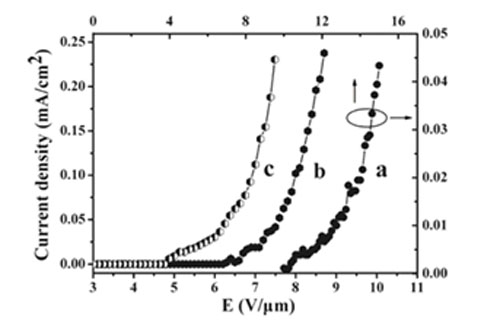Graphene has many excellent properties, such as high electrical conductivity, carrier mobility, high thermal conductivity, chemical stability, high specific surface area, and mechanical stiffness. Due to these outstanding physical and chemical properties, graphene shows considerable potential applications in biosensors, supercapacitors and so on.Moreover, as graphene possesses atomic thickness, high electrical conductivity, high aspect ratio, and good mechanical property, it has been regarded as an ideal cold cathode material for field emission devices.
Researchers at the State Key Laboratory of Solid Lubrication of the Lanzhou Institute of Chemical Physics (LICP), CAS, have made some new discoveries concerning the field emission properties of the graphene-based cathodes. They first prepared the spray-coated and electrophoresis deposited graphene films and then investigated their field emission behaviors.
It is found that the field emission properties of spray-coated graphene films were dependent on the temperatures. The turn on field and work function decreased with the testing temperature. The graphene film deposited by electrophoresis shows the interesting hysteresis phenomenon, which may be derived from the desorption or adsorption of adsorbed gaseous molecules on graphene during the risen or fell voltage process. In addition, researchers have fabricated the graphene/SnO2 composite cathode and improved the field emission of SnO2 nanostructures by depositing graphene buffer layer.
The work has received support from the Natural Science Foundation of China (Nos. 51002161 and 51005225) . The findings have been published in Applied Physics Letters (Applied Physics Letters, 99(2011)163103, 99(2011)173104) and ACS Applied materials & Interfaces (in press) respectively.

(a) FE characteristics of graphene film at different temperatures; the inset shows the corresponding FN plots. (b) Turn-on field and work function at different temperatures for the graphene film. (Image by YAN Xingbin et al.)

The typical J-E curves of the graphene film carried out with risen and fell voltages. (Image by YAN Xingbin et al.)

The field emission properties of the graphene/SnO2 composite cathodes (a) SnO2, (b) and (c) graphene/SnO2. (Image by YAN Xingbin et al.)
Further references:
Applied Physics Letters(Applied Physics Letters,99(2011)163103) Paper
Applied Physics Letters(Applied Physics Letters, 99(2011)173104) Paper
ACS Applied Materials & Interfaces (ACS Applied materials & Interfaces Paper, 2011, 3, 4299–4305)


